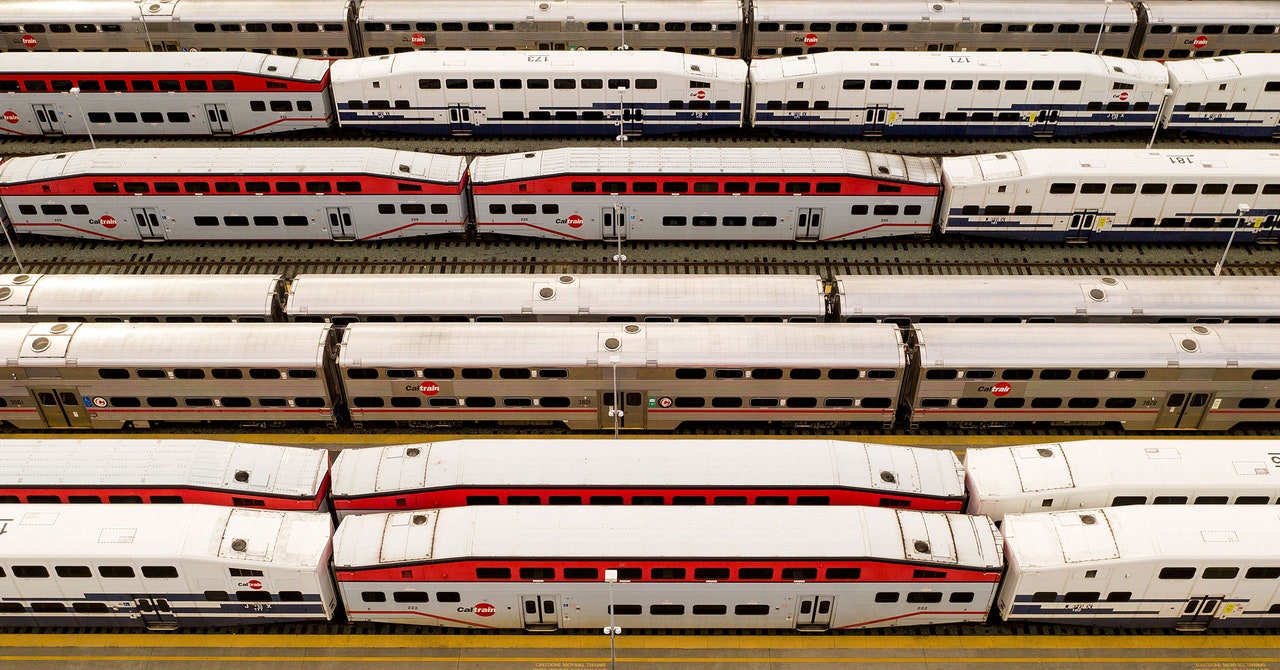On March 1, the Bay Area’s Caltrain rail system was in the midst of a $2 billion plan to electrify its tracks, replace its aging diesel locomotives, and run more trains between San Francisco and Silicon Valley. Now, officials warn that without serious funding help—about $100 million annually—Caltrain could shut down altogether.
There are plenty of reasons why Caltrain is sui generis. Many stem from the strange—some might say perverted—governance structure of Bay Area transit. Caltrain is managed by a board representing the three counties through which the rail line travels, and a ballot measure to request new funding needs to be approved by the boards of supervisors of each county, plus four separate transit boards. Last week, San Francisco supervisors declined to place a ⅛-cent sales tax on the ballot in November, a measure that would keep the rail line—which has lost 95 percent of its riders since pandemic shutdowns began in the spring—afloat.
The causes of Caltrain’s woes are unusual, but its predicament may be a harbinger for other transit systems in the Covid-19 era. “Transit is being stretched to the brink everywhere,” says Steven Higashide, director of research at the research and advocacy organization TransitCenter. “It’s not just in the Bay Area that agencies are facing these existential questions of how to triage service.”
Public transit faces a near-perfect storm. Ridership—and fare revenue—have dropped dramatically, as many people work from home and others avoid mass anything. Each transit system is different, but even before the pandemic, fares generally covered only 20 to 25 percent of system operating costs. The rest comes from taxes. But tax receipts are falling at all levels of government amid the coronavirus-induced economic downturn. Meanwhi

